 |
 |
 |
| |
Phase III TITAN Week 96 final analysis: efficacy/safety of darunavir/ritonavir versus lopinavir/ritonavir in lopinavir/ritonavir-na´ve, treatment-experienced patients
|
| |
| |
Reported by Jules Levin
9th International Congress on HIV and Drug Therapy in HIV Infection, Glasgow,
UK, 9-13 November 2008
Denes Banhegyi,1 Christine Katlama,2 Clovis Da Cunha,3 Stefan Schneider,4 Anita Rachlis,5 Oleg Romanenko,6 Cassy Workman,7 Ann Vandevoorde,8 Frank Tomaka,9 Els de Paepe,8 Tony Vangeneugden,8 Sabrina Spinosa-Guzman8
1Szent Laszlo Hospital, Budapest, Hungary; 2H˘pital de la Pitie-Salpetriere, Paris, France; 3Centro Medico Sao Francisco, Curitiba, Brazil; 4Living Hope Clinical Foundation, Long Beach, CA, USA; 5University of Toronto, Toronto, Ontario, Canada;
6Republican Centre for AIDS and Infectious Diseases Prevention, Tatarstan Republic, Russia; 7Ground Zero Medical Centre, Darlinghurst, Australia; 8Tibotec BVBA, Mechelen, Belgium; 9Tibotec Inc., Yardley, PA, USA
AUTHOR CONCLUSIONS
Results of this analysis confirmed the results of the Week 48 primary analysis, demonstrating that DRV/r is non-inferior and superior to LPV/r in virological response (viral load <400 copies/mL, TLOVR) in treatment-experienced patients.
DRV/r patients were approximately half as likely to experience VF than LPV/r patients.
Significantly greater efficacy (viral load <50 copies/mL, TLOVR) was shown with DRV/r compared to LPV/r in the presence of >/=1 primary PI mutation and in patients who had received >/=1 PI.
DRV/r continued to demonstrate a good safety and tolerability profile over 96 weeks and was associated less frequently with diarrhoea and changes in triglycerides and total cholesterol than LPV/r.
TITAN: Summary of Week 96 analysis
This final 96-week analysis of the Phase III TITAN trial (TMC114-C214; TMC114/r In Treatment-experienced pAtients Na´ve to lopinavir) demonstrates that darunavir (DRV) with low-dose ritonavir (DRV/r) 600/100mg bid is an effective treatment option for treatment-experienced patients.
DRV/r patients had significantly greater virological response rates than lopinavir
(LPV) with low-dose ritonavir (LPV/r) patients
-- 67% of DRV/r patients vs 59% of LPV/r patients had HIV-1 RNA <400 copies/mL (estimated difference in response = 8.7%, 95% confidence interval [CI]: 0.7-16.7; intent-to-treat/time-to-loss of virological response [ITT-TLOVR]),
confirming non-inferiority (p<0.001) and superiority (p=0.034) of DRV/r over
LPV/r.
Sixty per cent of DRV/r and 55% of LPV/r patients achieved viral load <50 copies/mL (difference in response = 5.2%, 95% CI: -2.8 to 13.1; p=0.200, ITT-TLOVR).
DRV/r patients were approximately 50% less likely to experience virological failure (VF, HIV-1 RNA <400 copies/mL) as LPV/r patients
-- 14% of DRV/r patients vs 26% of LPV/r patients experienced VF (p<0.001, ITT-TLOVR [non-VF censored]; post-hoc analysis chi-square test).
DRV/r continued to demonstrate a good safety and tolerability profile over 96 weeks and was associated less frequently with diarrhoea and changes in triglycerides and total cholesterol than LPV/r
-- grade 2-4 treatment-related diarrhoea occurred less frequently in DRV/r patients than in LPV/r patients (8% vs 15%, p=0.007; Fisher's exact test)
-- grade 2-4 treatment-related rash was more common in the DRV/r group than in the LPV/r group (3% vs 1%, p=0.08877; Fisher's exact test)
-- DRV/r patients compared with LPV/r patients had lower median percentage
changes in triglycerides (31% vs 44%, p<0.05) and total cholesterol (12% vs
18%, p<0.01).
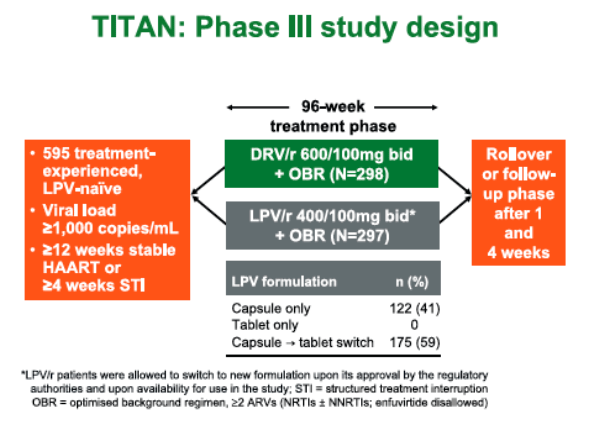
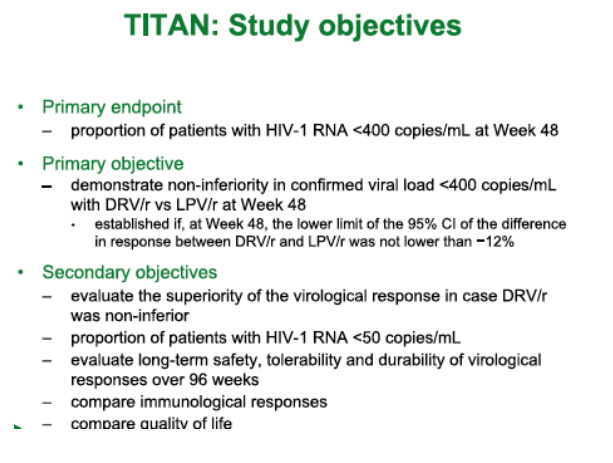
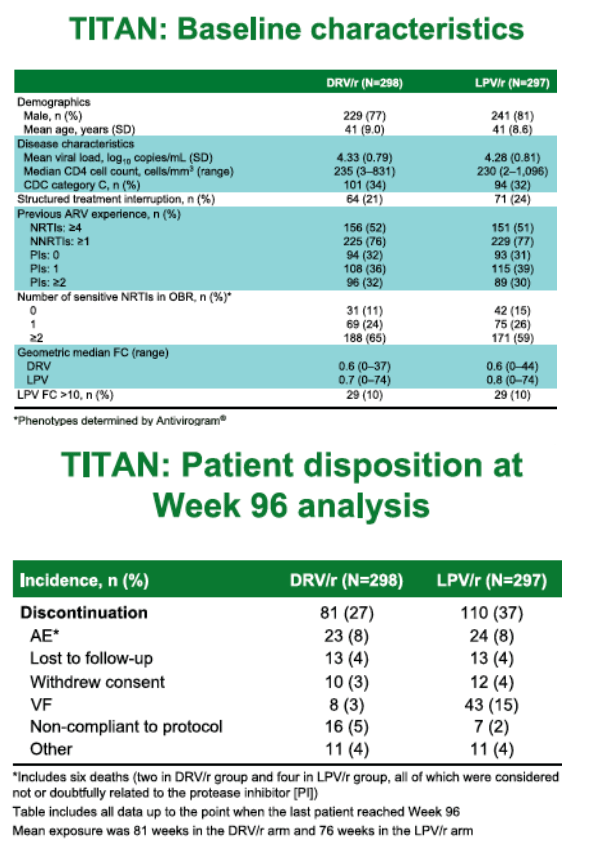
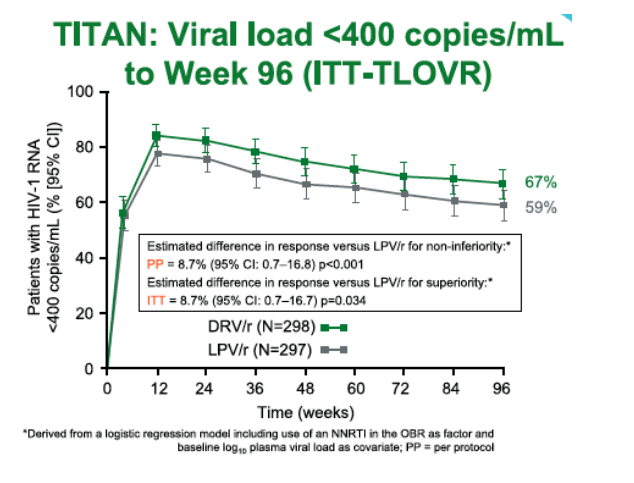
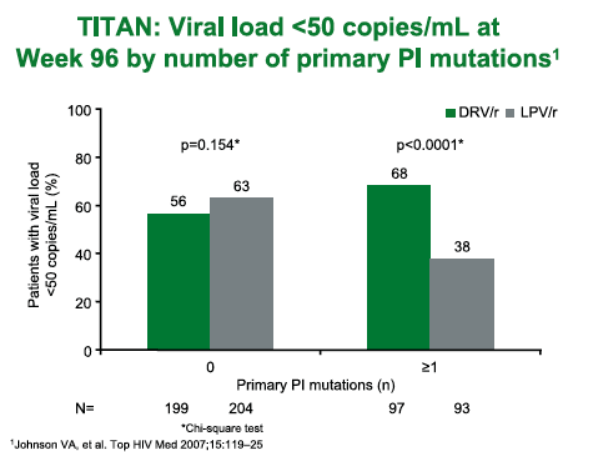
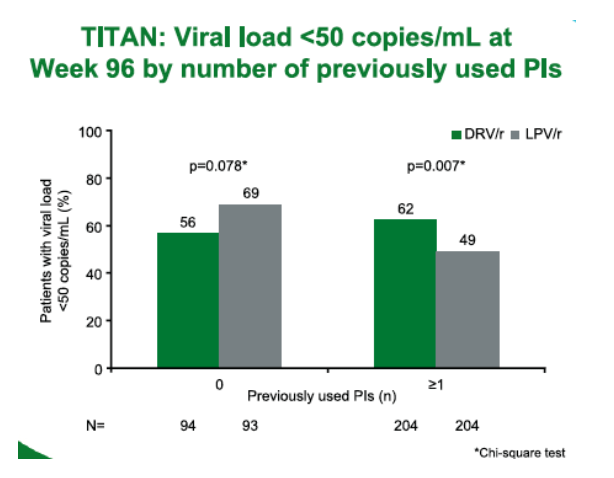
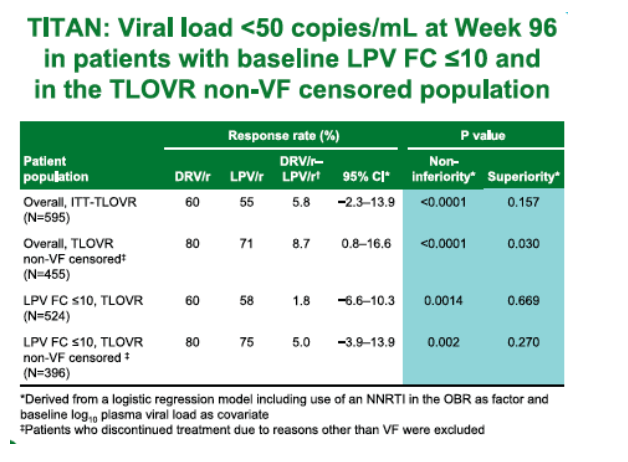
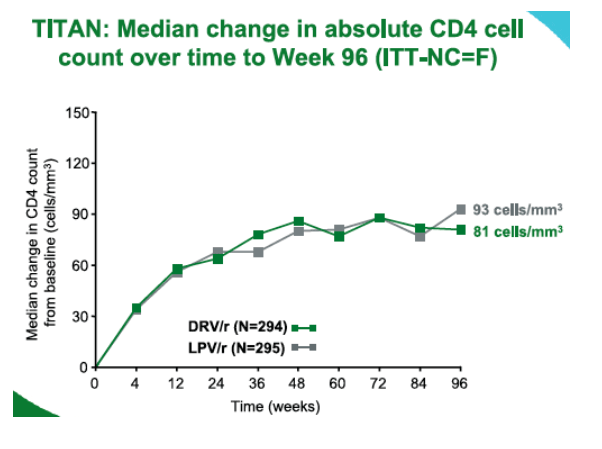
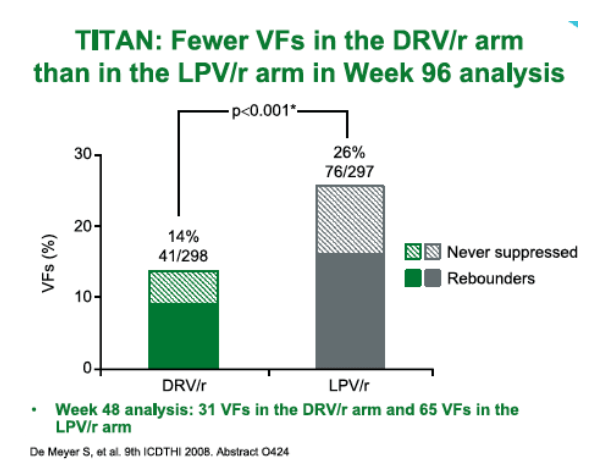
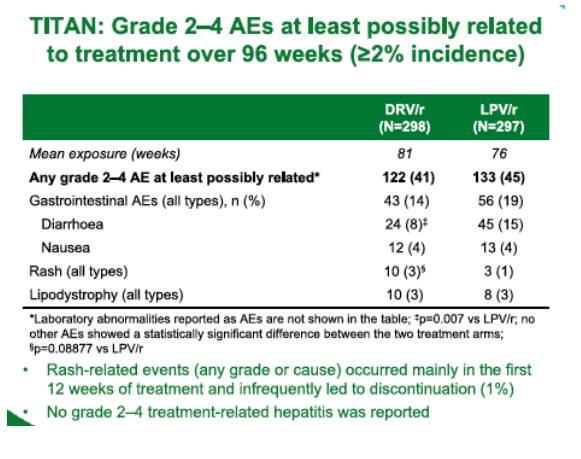
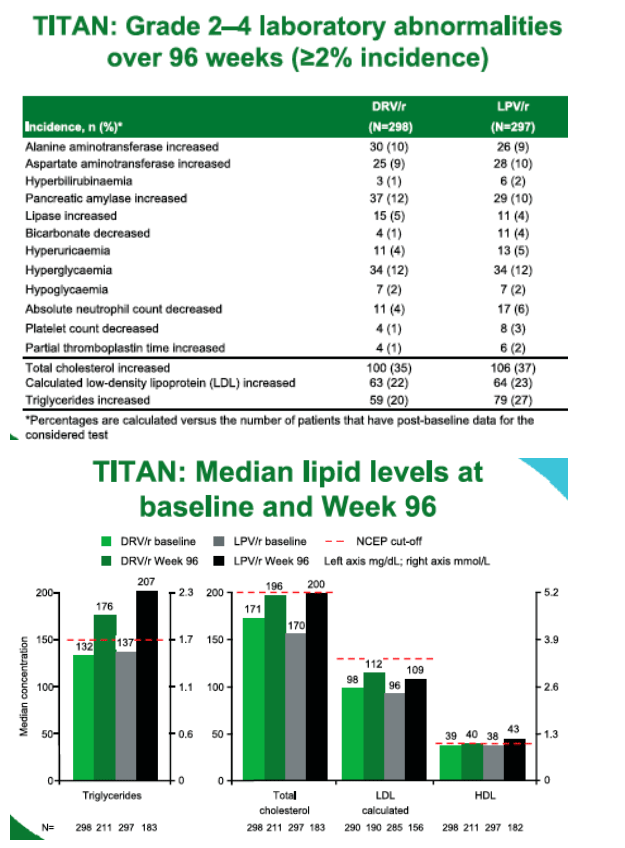
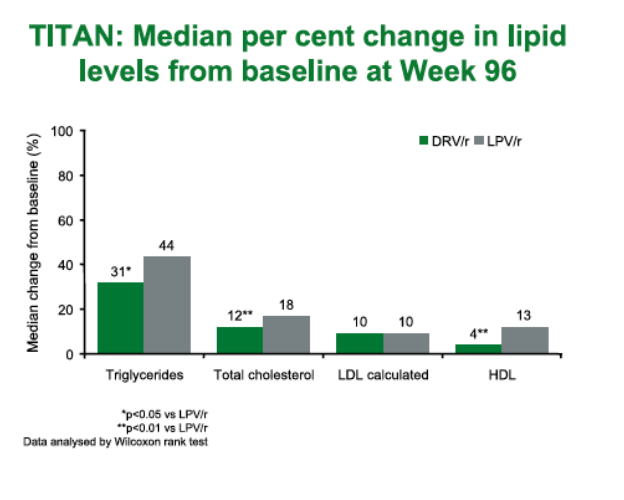
|
| |
|
 |
 |
|
|